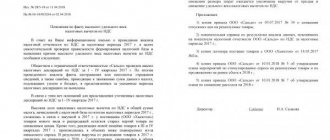Last year, the country faced dramatic changes in the pension system. Legal acts were adopted that changed the mechanism for Russians to retire and adjusted the procedure for them to receive various preferences. The innovations began to take effect at the beginning of this year. At the same time, the legislation provides for a transition period to mitigate the negative consequences for citizens associated with the implementation of the plan. This article will look at the retirement table for men and women by year starting from 2020.
At what age do workers retire?
When considering the bill, a new concept appeared, which became fundamental for a large proportion of Russians. We are talking about “pre-retirees” - people engaged in working activities who have less than five years left before taking a well-deserved rest.
Important! Employers cannot take unreasonable actions against pre-retirees. In this case, the reasons for dismissal or refusal to hire must be supported by compelling reasons. Otherwise, the employer faces punishment in accordance with the Criminal Code of the Russian Federation or the Code of Administrative Offenses of the Russian Federation. In addition, the state takes into account the interests of these segments of the population and provides them with budgetary funds for retraining and courses related to advanced training.
After numerous revisions, the law was adopted. The main amendment was the reduction of the age required for retirement for women. It was planned to raise it immediately for eight years, however, after much discussion, the figure was lowered to 5. In addition, according to the innovations during the transition period, you can take advantage of preferential conditions upon completion of your professional activity (2019-2020).
A bill has been introduced to return the old retirement age
The initiative is contained in a national action plan to normalize business life and restore employment and incomes. The working version of the document, jointly prepared by the Ministry of Economic Development, the Ministry of Labor and the Ministry of Finance on behalf of Prime Minister Mishustin, was sent to the government. The final version should be ready by May 25.
Today, early retirement can be taken, firstly, by those who lost their jobs two years before retirement age, and secondly, by those whose work experience is 20 years for women and 25 for men. Another key condition: the employment service must confirm that such people were unable to find a new job, despite all their efforts.
The new plan deals with citizens who have three years left before going on vacation. That is, about women aged 53.5 years and men aged 58.5 years. There is no requirement for mandatory work experience in the document.
It would seem that in the current economic crisis, a step in the right direction has been proposed. But independent experts see many pitfalls in implementing the initiative.
It is no secret that many pre-retirees work “in the gray”, without formalizing an employment relationship due to the low demand for older employees. All of them will be left behind by legislation that covers only the sphere of official employment. In addition, in a number of cases, it will not be easy for applicants for early retirement to confirm that their company (or enterprise) had layoffs or that it closed due to the pandemic. There is also a considerable risk that employers will actively get rid of this category of workers, shifting responsibility for them to the state.
The proposed scheme looks extremely clumsy, says Oksana Dmitrieva, deputy of the Legislative Assembly of St. Petersburg, Doctor of Economics. According to her, with regard to pre-retirees, another, more logical, anti-crisis measure that does not require administration suggests itself - the abolition of the pension reform. So that people who find themselves in a vulnerable financial situation gain the right to retire in the way they previously intended. Today, some pre-retirement workers were not fired, but were sent on unpaid leave, while others were put on sick leave, with a reduction in their actual earnings.
“If we return to the previous retirement age, this, among other things, will relieve the burden on employers and give them room to maneuver,” the deputy notes. – Now, if you want to retire early, you must be fired. But the state is not interested in high official unemployment; it encourages those employers who retain staff; it gives them loans to pay wages, which should not be lower than the subsistence level of 12,130 rubles. These two practices contradict each other. The new government initiative pushes the employer and the employee head-to-head even further.”
Oksana Dmitrieva recalls that in mid-April, as a deputy of the Legislative Assembly of St. Petersburg, she proposed returning to the retirement age of 55 and 60 years due to the pandemic. If the initiative were to become law in June (it will be considered by the Legislative Assembly Committee this week), then about 2 million citizens from “risk groups” would be able to start receiving pensions starting in the summer. In 2021, another million will be added to them. This will require increasing pension payments by 202.6 billion rubles this year and 272 billion rubles in 2020 and 2021, respectively.
Dmitrieva says that she is against the “helicopter” distribution of money to the population (not to be confused with direct payments), since in a crisis and limited financial resources it is necessary to help certain, most vulnerable categories: families with children, people who have lost their jobs, pre-retirees. So just such payments seem to her to be targeted and justified. And for a state that has a multi-trillion dollar “stash” in the form of the National Welfare Fund, such expenses will not be ruinous. However, there is not the slightest confidence that Dmitrieva’s plan will be implemented.
The age at which a pension can be applied for
Under the plan, the age will be raised in stages, eventually reaching 65 and 60 for men and women respectively. The main feature, as already noted, is the gradual tightening of the requirements for pre-retirement people. Thus, the change in the indicator for men will be made as follows:
| Year of birth | When to retire? |
| 1959 (1st half) | 2019 (01.07-31.12) |
| 1959 (2nd half) | 2020 (01.01-30.06) |
| 1960 (1st half) | 2021 (01.07-31.12) |
| 1960 (1st half) | 2022 (01.01-30.06) |
| 1961 | 2024 |
| 1962 | 2026 |
| 1963 | 2028 |
| 1964 | 2029 |
Thus, the parameter reflecting the duration of the working period of a man’s life is 59 - 63 years. birth will rise. For citizens born in 1964 and younger, new rules will apply.
For women, in turn, the amendments at the request of the President of the Russian Federation turned out to be positive news. So, instead of 63 years, they will have to rework it for five years compared to the previous version of the law. Thus, from January of this year the situation will change as follows:
| Woman's year of birth | Year of retirement |
| 1964 (I half) | 2019 (01.07-31.12) |
| 1964 (II half) | 2020 (01.01-30.06) |
| 1965 (I half) | 2021 (01.07-31.12) |
| 1965 (II half) | 2022 (01.01-30.06) |
| 1966 | 2024 |
| 1967 | 2026 |
| 1968 | 2028 |
| 1969 | 2029 |
| 1970 | 2030 |
| 1971 | 2031 |
Formula for calculating retirement age
If we use the symbolism of this bill and designate the letter “V” as the age at which the right to a pension arose until 12/31/2018 inclusive (as is done in Appendix 1 to this document), then the year of retirement can be calculated using the following formula:
Year of retirement = V + N months,
where N is the number of months for which retirement is postponed by the new law compared to the old one. Moreover, the number N depends on V, and in order to make the calculation yourself, you will have to look at this very Appendix 1 of the law that came into force (and received its final details - number and date).
But since even a relatively simple formula or relationship is more suitable for lovers of mathematical leisure, and the main category of the population needs a simpler and more visual form of presenting information, when should a specific “grandmother” or “grandfather” retire according to the new rules, it makes sense to present these data in the form of tables, and separately for women and men.
https://youtu.be/WyPTSkY7lGo
What other changes await Russians in 2019?
In addition to the main innovation, the reform provides for adjustments to related requirements. They are associated with the need to develop and accumulate IPC. The latter refers to the individual pension coefficient.
Important! According to the requirements of Federal Law No. 400-FZ, in order to submit documentation for registration of old-age preferences, a number of requirements must be met. These include: reaching a certain legal age; development of insurance experience; accumulation of individual points.
The length of service associated with activities in an official place of employment (with deductions) is an indicator that causes many problems for persons who for a long period of life could not get a job or were engaged in unofficial activities. Until 2020, it was enough to work for 9 years and receive the minimum that entitles you to a subsidy. However, since January the situation has changed dramatically. Now the assignment of social pension occurs even after the specified time has been worked out. So, in order to receive an insurance preference, you will have to carry out activities in accordance with the requirements specified in the table:
| Year | Experience requirements (full number of years taken into account) |
| 2019 | 10 |
| 2020 | 11 |
| 2021 | 12 |
| 2022 | 13 |
| 2023 | 14 |
| 2024 | 15 |
Important! Since the beginning of the year, Russians have had the opportunity to purchase a new type of preferences. She is appointed in connection with work experience equal to 42 and 37 years. for men and women, respectively. The benefit allows you to apply for an old-age subsidy for 24 months. earlier than it should be according to the general regime.
As for the IPC, it is involved in the calculation of subsidies by multiplying with the cost for each unit. Requirements for the indicator will change from January in the following order:
| Registration of preference | Minimum IPC |
| 2019 | 16.2 |
| 2020 | 18.6 |
| 2021 | 21 |
| 2022 | 23.4 |
| 2023 | 25.8 |
| 2024 | 28.2 |
| 2025 | 30 |
Some citizens received privileges in connection with working and living conditions. First of all, these include northerners. Thus, persons living in the Far North and equivalent territories can formalize relations with the Pension Fund of the Russian Federation five years earlier than other Russians.
This condition was in effect previously. However, with the adoption of the new legal act, only the difference has changed, but not the time of retirement. To take a closer look at the procedure for completing the professional activities of northerners, you should refer to the summary table:
| Year of birth | How old will he be? | Date of appointment of old age preference | |
| MJ | AND | ||
| 1964 | 1969 | 55.5-50.5 | 2019-2020 |
| 1965 | 1970 | 56.5-51.5 | 2021-2022 |
| 1966 | 1971 | 58-53 | 2024 |
| 1967 | 1972 | 59-54 | 2026 |
| 1968 | 1973 | 60-55 | 2028 |
When is it time to retire?
Born in:
- in the first half of 1962, women and the first half of 1957, men retired at 55.5 and 60.5 years, respectively;
- in the second half of 1962, women and the second half of 1957, men retired at 56 and 61 years old, respectively;
- in the first half of 1963, women and the first half of 1958, men retired at 56.5 and 61.5 years, respectively;
- in the second half of 1963, women and the second half of 1958, men retired at 57 and 62 years old, respectively;
- in the first half of 1964, women and the first half of 1959, men retired at 57.5 and 62.5 years, respectively;
- in the second half of 1964, women and the second half of 1959, men retired at 58 and 63 years old, respectively.
Why is the system being reformed: pros and cons?
According to the Government of the Russian Federation, such innovations at the legislative level are necessary to ensure a stable increase in contributions to elderly citizens. The President of Russia shares a similar opinion. So, after a few years, the average payments from the Russian Pension Fund will be about twenty thousand rubles. This increase is largely due to indexation carried out at a level above inflation.
According to plans, the amount of contributions will increase annually by about 1 thousand rubles. If you recalculate the indicated money in percentage terms, you get more than 7 percent. Thus, by 2024 the total indexation will be 35%.
Indexation will take place in January. The procedure is carried out automatically without the need for the beneficiary to contact the Pension Fund branch.
Important! After reforming the system, indexation is planned to be carried out twice in 12 months: in February - at the inflation rate; in April - bonuses from savings from the Pension Fund. Thus, the value of the proceeds will be provided mainly by the first increase.
As noted earlier, employers will not be able to terminate the contract with a pre-retirement employee or refuse to hire him. However, this approach has been repeatedly criticized by experts and the business community. There is a risk that employers will part ways with these workers earlier.
One of the advantages of such a solution is the presence in the training program for applicants who will soon reach retirement age. In addition, these activities will be carried out at the expense of budget funds.
Question:
Are there any preferences for a person of pre-retirement age who cannot find a job?
Answer:
In this case, the amount of unemployment benefits will be increased and will amount to 11,280 rubles. The amount is paid over 12 months. For other Russians, the benefit is 8 thousand rubles. In addition, it is paid only from three months to six months.
Who is not affected by the change in pension legislation?
Some categories of citizens will not feel the effect of the new legislation at all. For them, all the parameters previously established by legal acts are retained, but privileges in the form of allowances, indexation, benefits, and compensation become available. These individuals include:
- Mothers of many children raising five offspring before they reach the age of eight.
- Mothers with two children and work in the Far North.
- Persons responsible for a disabled child.
- Disabled people whose illness was caused by the performance of official duties in a zone of military conflicts, as well as visually impaired people (Group I).
- Northern hunters.
- Victims of radiation and other man-made accidents.
- Workers employed in hazardous and hazardous industries.
- Employees of the Federal Penitentiary Service.
- Tractor drivers employed in the agricultural sector.
- Drivers of urban passenger transport.
- Search engines.
- Flight crew.












